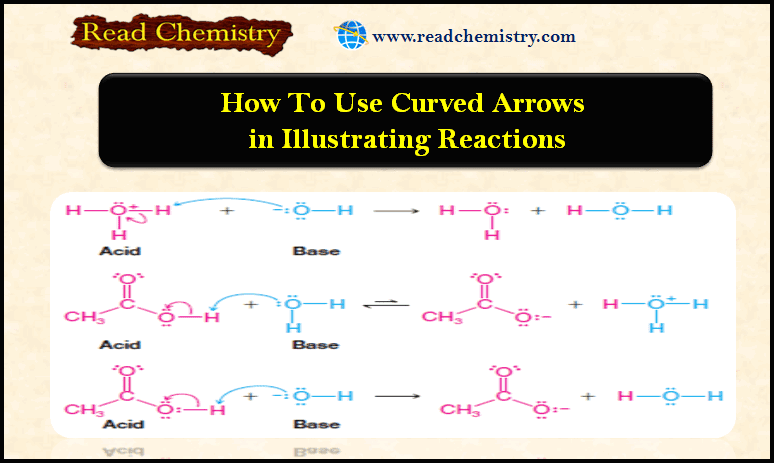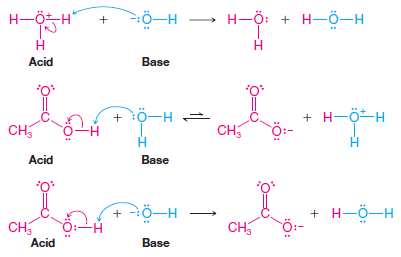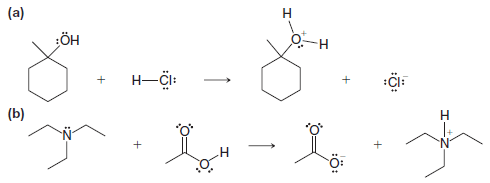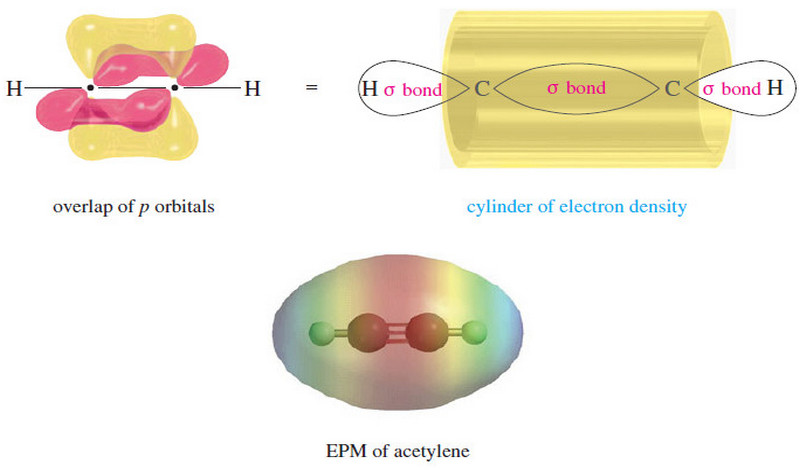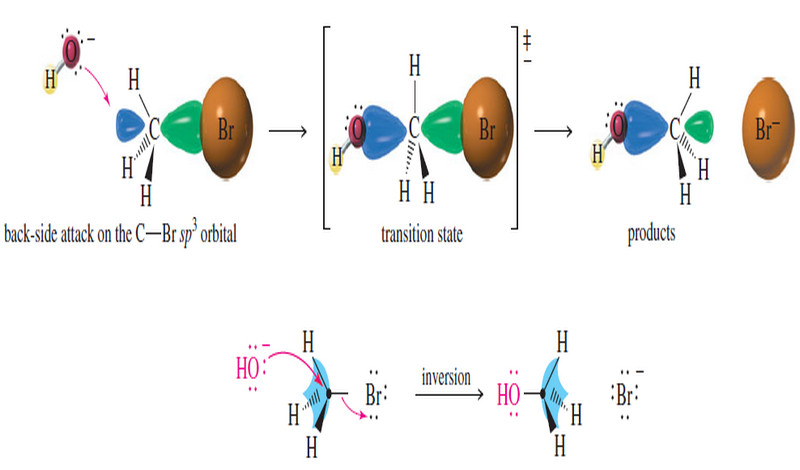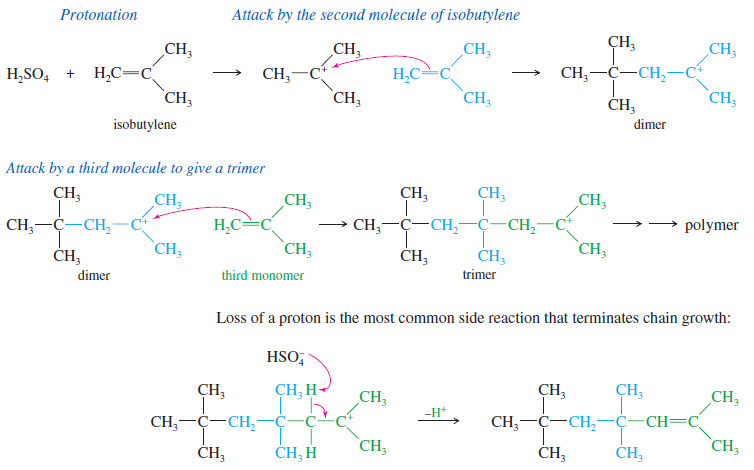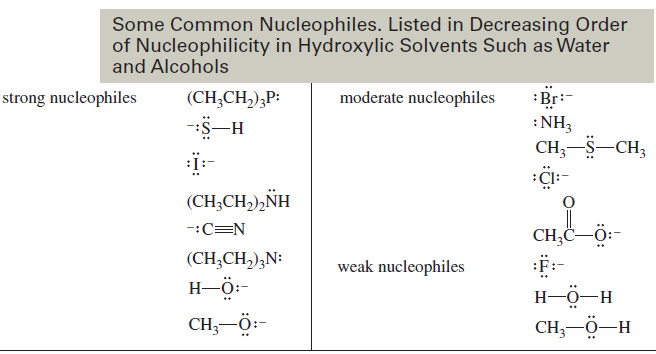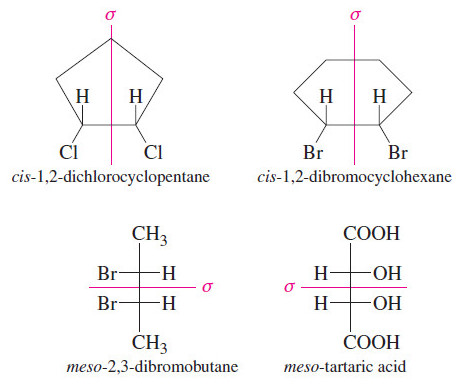How to use Curved Arrows in illustrating Reactions
– In this subject, we will discuss How to use Curved Arrows in illustrating Reactions.
How to use Curved Arrows in illustrating reactions
– Up to this point, we have not indicated how bonding changes occur in the reactions we have presented, but this can easily be done using curved-arrow notation.
– Curved arrows show the direction of electron flow in a reaction mechanism.
(1) Draw the curved arrow so that it points from the source of an electron pair to the atom receiving the pair.
– Curved arrows can also show the movement of single electrons.
(2) Always show the flow of electrons from a site of higher electron density to a site of lower electron density.
(3) Never use curved arrows to show the movement of atoms.
– Atoms are assumed to follow the flow of electrons.
(4) Make sure that the movement of electrons shown by the curved arrow does not violate the octet rule for elements in the second row of the periodic table.
Examples of using Curved Arrows to illustrate reactions
Example (1): Reaction of Water with Hydrogen Chloride
– The reaction of hydrogen chloride with water provides a simple example of how to use curved arrow notation.
– Here we invoke the first of many “A Mechanism for the Reaction” boxes, in which we show every key step in a mechanism using color-coded formulas accompanied by explanatory captions
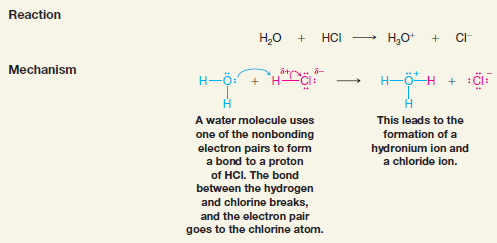
– The curved arrow begins with a covalent bond or unshared electron pair (a site of higher electron density) and points toward a site of electron deficiency.
– We see here that as the water molecule collides with a hydrogen chloride molecule, it uses one of its unshared electron pairs (shown in blue) to form a bond to the proton of HCl.
– This bond forms because the negatively charged electrons of the oxygen atom are attracted to the positively charged proton.
– As the bond between the oxygen and the proton forms, the hydrogen–chlorine bond of HCl breaks, and the chlorine of HCl departs with the electron pair that formerly bonded it to the proton.
– If this did not happen, the proton would end up forming two covalent bonds, which, of course, a proton cannot do.
– We, therefore, use a curved arrow to show the bond cleavage as well.
– By pointing from the bond to the chlorine, the arrow indicates that the bond breaks and the electron pair leaves with the chloride ion.
Example (2): Acid-base reactions
– The following acid-base reactions give other examples of the use of the curved-arrow notation:
Solved problem on using Curved Arrows to illustrate reactions
Add curved arrows to the following reactions to indicate the flow of electrons for all of the bond-forming and bond-breaking steps.
Strategy:
– Recall the rules for the use of curved arrows presented at the beginning of this subject.
– Curved arrows point from the source of an electron pair to the atom receiving the pair, and always point from a site of higher electron density to a site of lower electron density.
– We must also not exceed two electrons for a hydrogen atom, or an octet of electrons for any elements in the second row of the periodic table.
– We must also account for the formal charges on atoms and write equations whose charges are balanced.
Answer:
(a)
– The hydrogen atom of HCl is partially positive (electrophilic) due to the electronegativity of the chlorine atom.
– The alcohol oxygen is a source of electrons (a Lewis base) that can be given to this partially positive proton.
– The proton must lose a pair of electrons as it gains a pair, however, and thus the chloride ion accepts a pair of electrons from the bond it had with the hydrogen atom as the hydrogen becomes bonded to the alcohol oxygen.
(b)

- Reference: Organic chemistry / T.W. Graham Solomons, Craig B.Fryhle, Scott A. Snyder, / ( eleventh edition) / 2014.

